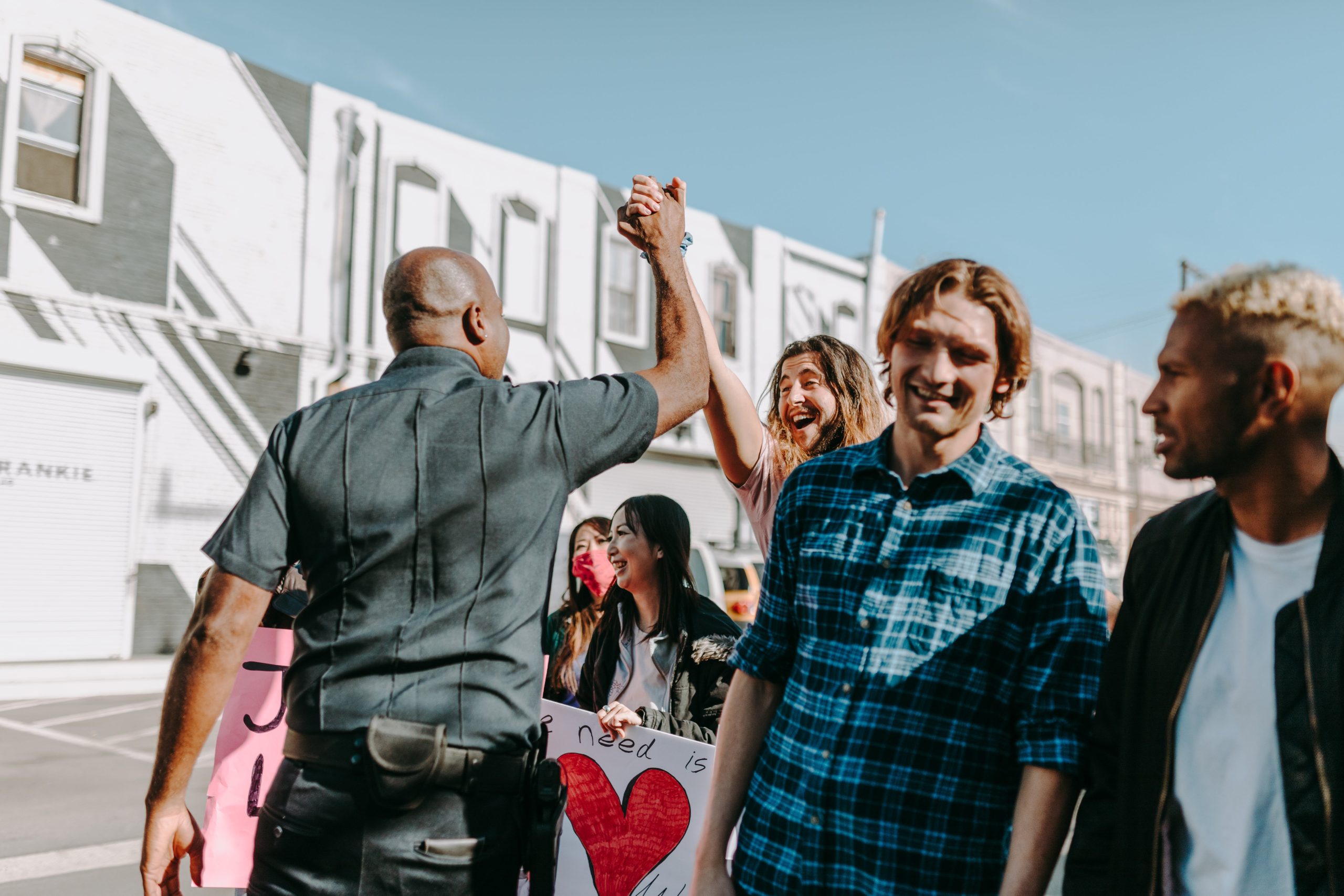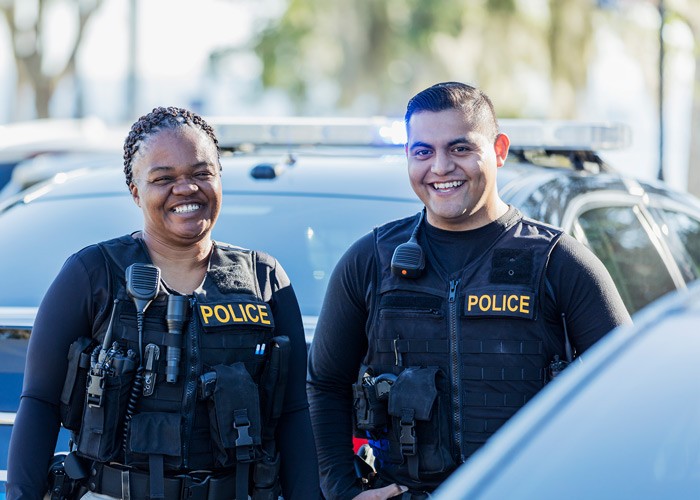Introduction
Police departments nationwide increasingly recognize the value of community input for transforming law enforcement from within. Constructive feedback, program co-development, and resident-led initiatives create more responsive agencies aligned with local needs. But truly empowering community voices requires relinquishing some control – which can be challenging for rigid policing cultures. This guide showcases leading examples of community-driven innovation and tangible steps your department can take to actualize grassroots ideas. When communities help shape priorities and programs, the results earn trust and enthusiasm. It’s time to give power to the people you serve.
Form Community Advisory Councils
Advisory councils institutionalize sustained community input through diverse local representatives who:
- Provide feedback on policies, trainings, programs, and strategies.
- Coordinate community outreach and educational initiatives.
- Discuss solutions to persistent public safety challenges.
- Plan collaborative public events like community academies and trainings.
- Advise on appropriate responses to controversial incidents.
Formalizing community perspective prevents token one-off engagement. Regular meetings build familiarity and trust.
Crowdsource Solutions to Persistent Problems
Crowdsourcing leverages collective community experiences to solve entrenched issues. Strategies include:
- Social media polls for reform ideas on challenges like vehicle break-ins or speeding complaints.
- Hackathons bringing coders together to develop helpful digital tools.
- Youth video contests crowdsourcing messages on dangers like opioids or gangs.
- Soliciting citizen proposals for allocating portions of policing budgets towards desired services.
Creative crowdsourcing pools diverse insights while expanding civic participation.
Fund Participatory Budgeting Initiatives
Participatory budgeting directly empowers residents to allocate portions of public safety funding towards community-designed projects. The democratic approach:
- Allows residents to brainstorm ideas and submit proposals.
- Vetted projects are voted on by the community to determine funding allocation.
- Residents oversee implementation of chosen initiatives.
The process fosters transparency, inclusion, education, and creative grassroots solutions tailored to local contexts.
Spotlight Community Coproduction Successes
Positive stories of collaborative community policing in action inspire further engagement. Share examples like:
- Clergy patrolling neighborhoods alongside officers to mediate disputes.
- Youth and police hosting joint sports tournaments and mentoring programs.
- Officers speaking at community forums and events to educate about department missions.
- Enhanced cultural competence training co-developed with minority advocacy groups.
- Citizens volunteering their tech expertise to build helpful online tools.
Publicizing the power of cooperation cultivates more participants and ideas. Credit community members for their role.
Incorporate Resident Research
Community-driven research processes enhance strategy:
- Convene resident focus groups to study needs and propose solutions.
- Recruit volunteer research partners from colleges or advocacy groups.
- Train interested community leaders in conducting interviews and surveys to capture peer feedback.
- Compensate community researchers for their expertise like any consultant.
Resident-led research ensures robust community representation shaping findings.
Develop Transformative Justice Programs
Transformative justice interventions seek rehabilitation over punishment through community-led restorative models. Initiatives include:
- Mental health response teams staffed by social workers and peer counselors able to spend extensive time addressing crisis calls.
- Non-police responders trained to mediate non-violent disputes and provide referrals to services.
- Support circles that surround at-risk youth with community encouragement and access to opportunities.
- Participant-led accountability processes focused on making amends through community service.
Centering community wisdom in alternative response approaches reduces reliance on ineffective punitive cycles.
Partner to Meet Underserved Needs
Community groups fill critical gaps that police lack bandwidth or expertise to address alone. Joint initiatives include:
- Collaborating with social workers to check on homeless members during extreme weather.
- Providing police space for domestic violence advocates to offer confidential support services.
- Having victim advocates participate in death notifications and explain available assistance.
- Working with youth non-profits to engage at-risk teens through sports, arts, and vocational programs.
Strategic community partnerships strengthen comprehensive support unavailable through policing alone. Provide financial and institutional support.
Conclusion
Community participation is no longer an optional nice-to-have, but a strategic necessity for relevant 21st century policing. Constructive input, collaborative problem-solving, resident-led research, participatory budgeting, crowdsourcing, storytelling, participatory justice, and impactful partnerships give community members authority in shaping public safety. While this power shift challenges traditional models, the rewards – greater trust, relevance, innovation, and collective efficacy – are invaluable. Creative communities brim with untapped ideas and passion waiting to be invited in. Are you ready to give power to the people and let them revolutionize your approach to policing? The possibilities are limitless when you empower those you serve. Click here to survey your community.
Frequently Asked Questions
What steps make community advisory councils effective?
Recruit demographically diverse council members, maintain consistent meetings and status updates, incorporate member input into substantive policy and program reform, and value lived experiences on par with bureaucratic considerations.
How are departments funding community-driven programs?
Dedicated participatory budgeting allocations, utilizing asset forfeiture funds towards community priorities, participatory justice grants, shifting portions of bloated police budgets, and collaborating with city social service agencies help fund community initiatives.
What engagement maximizes crowdsourcing success?
Multichannel promotion through community partners, appealing framing like competitions, participatory selection of ideas, recognizing contributors, providing project implementation updates, and incentivizing ongoing participation ensure robust, demographically diverse crowdsourcing.
How does community policing benefit from local partnerships?
Partners exponentially expand support capabilities and cultural competence. Formalize relationships through memorandums of understanding to institutionalize cooperation. Provide partners physical space and technology access to facilitate collaboration.
What risks come with excluding community perspectives?
Excluding community input perpetuates failure to meet local needs, erodes trust in legitimacy of reforms, misses creativity of grassroots ideas, reduces transparency, and destroys community goodwill necessary for reducing crime.






